


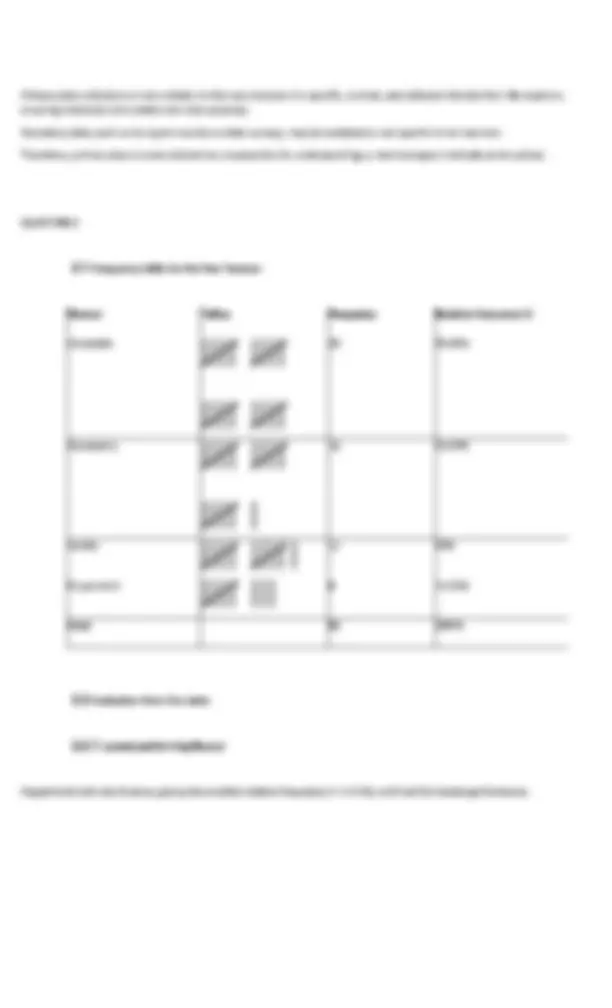
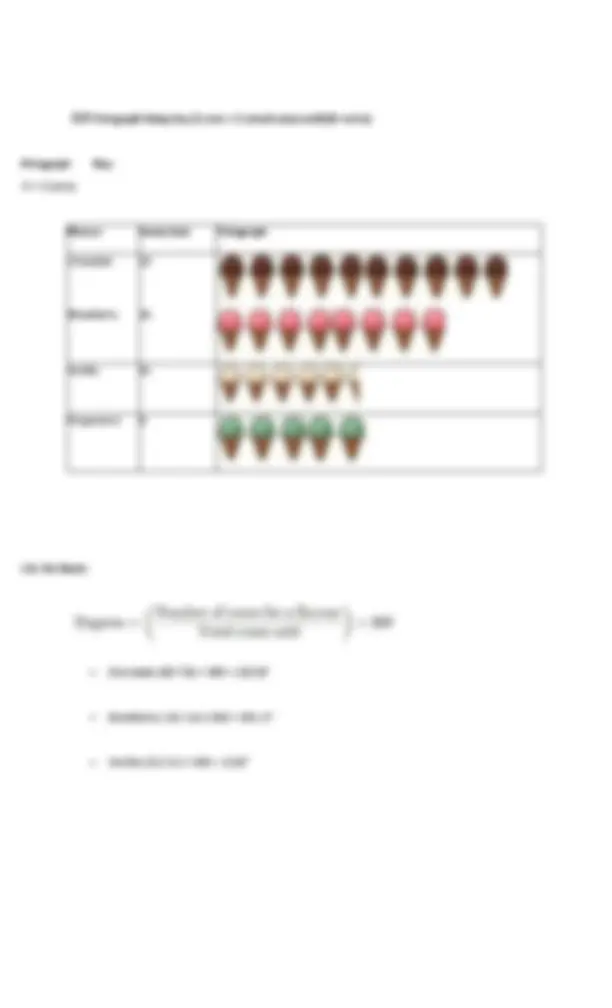

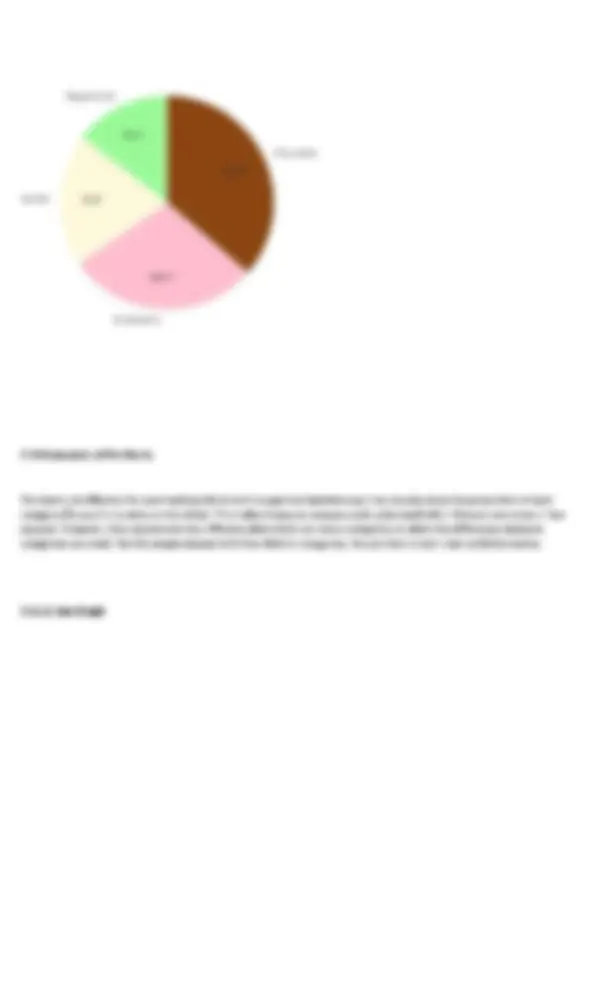
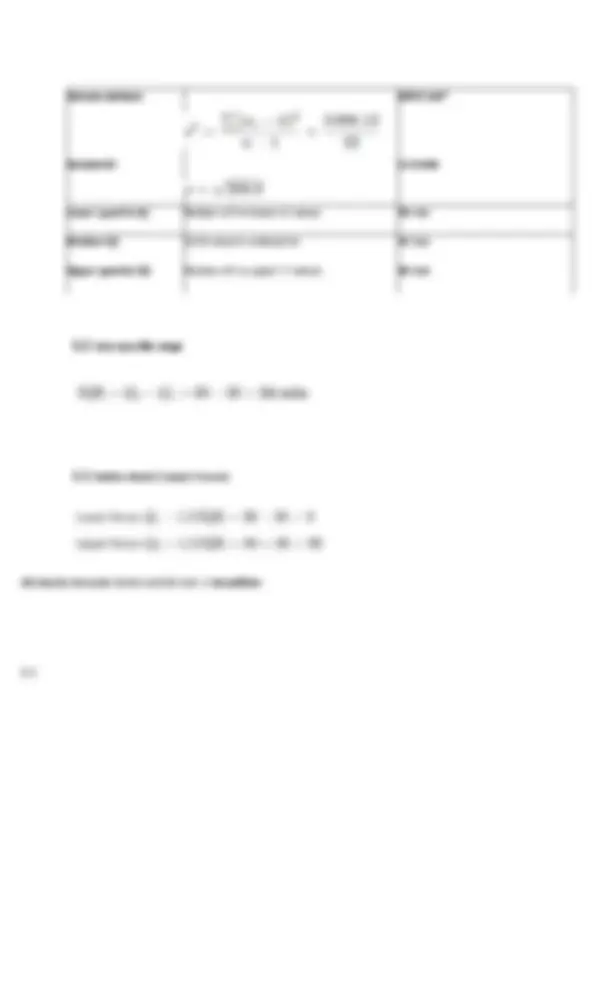
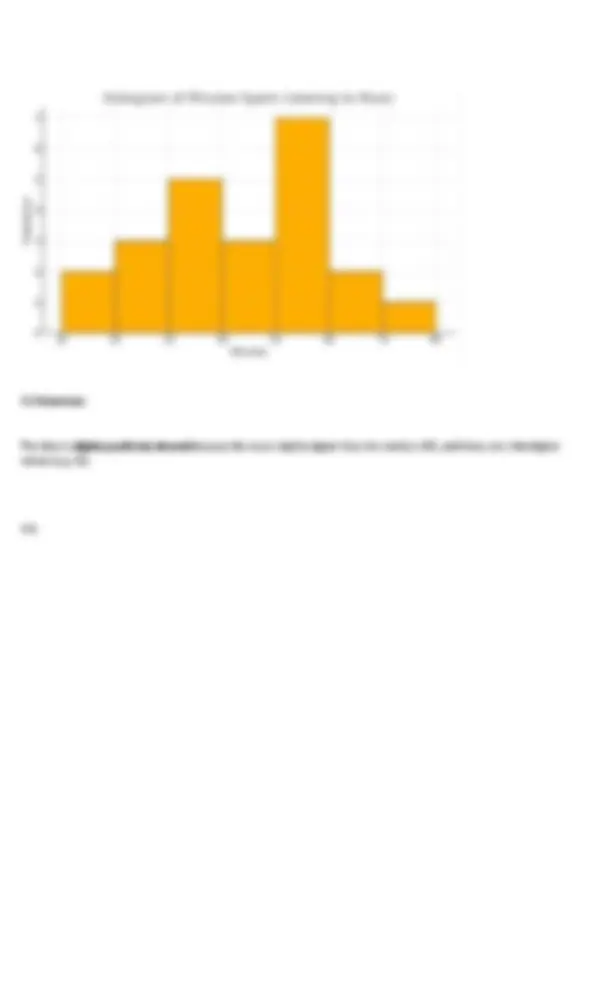
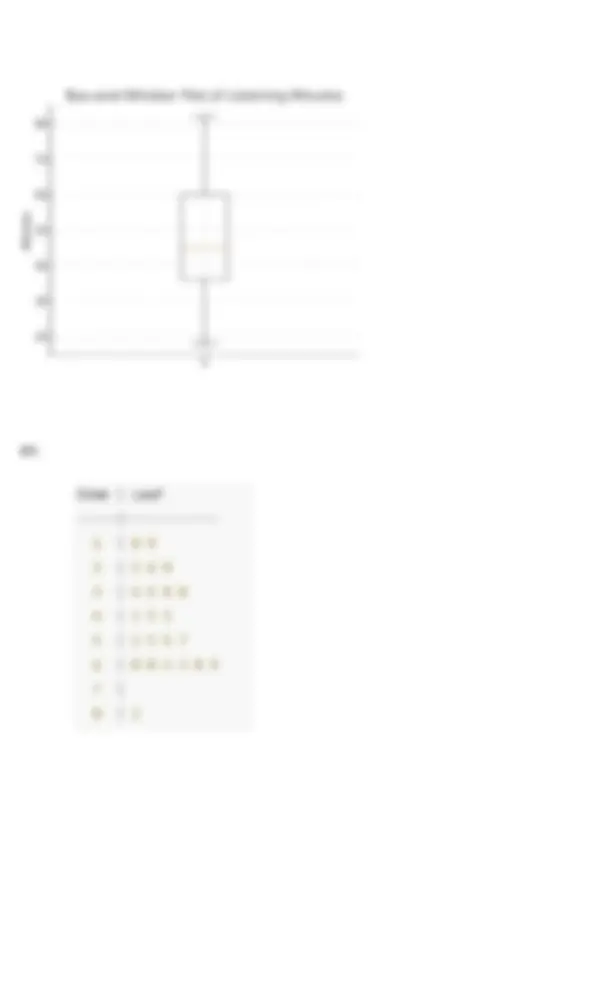



Study with the several resources on Docsity

Earn points by helping other students or get them with a premium plan


Prepare for your exams
Study with the several resources on Docsity

Earn points to download
Earn points by helping other students or get them with a premium plan
Community
Ask the community for help and clear up your study doubts
Discover the best universities in your country according to Docsity users
Free resources
Download our free guides on studying techniques, anxiety management strategies, and thesis advice from Docsity tutors
MIP2602 Assignment 2 2025 - DUE 29 May 2025
Typology: Exams
1 / 18

This page cannot be seen from the preview
Don't miss anything!











- MIP 1.1. The random variable of interest is the mode of transport learners use to get to school. 1.1. The population of interest is all Grade 10 learners at Praise Convent School.
The sample of interest is the learners who were randomly selected and surveyed by Mrs. Zinzi.
The data is qualitative because it describes a characteristic (type of transport) rather than a measurable quantity. It is also categorical because the responses (Car, Bus, Walk, Bicycle) represent categories or groups without any inherent numerical value or order. 1.1. The measurement scale is nominal. This is because the modes of transport are names or labels without any ranking or order. “Car” is not higher or lower than “Bus”; they are just different categories. 1.1.
An alternative method could be direct observation of how learners arrive at school. This would be more objective and accurate, though more time-consuming and limited to one or a few days. 1.1. Yes, the method meets the requirements of probability sampling because learners were randomly selected, meaning each learner in the population had an equal chance of being chosen. This reduces sampling bias. 1.1. Advantage: Surveys are quick, low-cost, and allow for easy data collection from many respondents. Disadvantage: The data may be subjective or inaccurate due to reliance on self- reporting and possible misunderstanding of questions. 1.1. She could use stratified random sampling, where learners are grouped by key characteristics (e.g., gender or residential area), and then a random sample is taken from each group. This ensures that all subgroups are fairly represented, increasing the accuracy of results. 1.1. The data is primary data because it was collected firsthand by Mrs. Zinzi directly from the learners for the specific purpose of her investigation. 1.1.
Primary data collection is more reliable in this case because it is specific, current, and collected directly from the learners, ensuring relevance and control over data accuracy. Secondary data, such as transport records or older surveys, may be outdated or not specific to her learners. Therefore, primary data is more tailored and trustworthy for understanding current transport methods at her school. QUESTION 2
Flavour Tallies Frequency Relative-frequency % Chocolate M LI/H 20 36.36% Strawberry ”H M 16 29.09%
Peppermint ”H’ I | l 00 14.55% Total 55 100 % 2.2 Evaluation from the table
Peppermint sold only 8 cones, giving the smallest relative frequency (= 14.5 %), so it had the lowest performance.
Ice Cream Sales By Flavour N^ 'L |^ <- Ice Cream Sales by Flavour 20.0} XI5k 150} 125} 100} 1.5} Number of^ Cones Sold 5.0t 25}t 0.0 (^) Vanilla Chocolate Strawberry Peppermint Flavour
A bar chart is appropriate because it visually represents categorical data (ice cream flavours) with corresponding frequencies, making it easy to compare the number of cones sold for each flavour. 2.7 Pictogram as an Effective Alternative for Younger Students A pictogram uses pictures instead of bars to represent data, which can be more engaging and easier for younger students to understand. The visual clarity and simplicity of images help learners grasp quantity differences without needing to interpret numerical scales.
2.8 Pictograph Using Key (1 cone = 2 actual cones sold) (9 marks) Pictograph Key: O =2 cones Flavour Cones Sold Pictograph o i 9 9 9 Q gg 9 % 9 g Strawberry 16 Vanilla 11 Peppermint 8 2.9. Pie Charts D Number of cones for a flavour 360 egrees — X & Total cones sold e Chocolate: (20 / 55) x 360 = 130.91° e Strawberry: (16 / 55) x 360 = 104.73° e Vanilla: (11 /55) x 360 = 72.00°
Peppermint 52.4¢ Chocolate Vanilla 72.0° 104.7° Strawberry 2.10 Evaluation of Pie Charts Pie charts are effective for summarizing this kind of categorical data because they visually show the proportion of each category (flavour) in relation to the whole. This makes it easy to compare and understand which flavours are more or less popular. However, they can become less effective when there are many categories or when the differences between categories are small. For this simple dataset with four distinct categories, the pie chart is both clear and informative. 2.11.2: Line Graph
Average Monthly Temperatures (°C) Temperature (°C) N^ N^ N^ N^ N o^ N^ ES^ [«^ e^ 4] — e^ ] 2.11.2: Trend Analysis The graph shows a clear seasonal temperature trend. Temperatures are highest in January and February (summer), gradually decrease through autumn (March to May), reaching the coldest months in winter (June and July). From August onward, temperatures begin rising again through spring (September to November), returning to summer highs in December. 2.11.3: Why a Line Graph is Appropriate A line graph is ideal for showing changes over time, especially continuous data like temperature. It effectively highlights trends and seasonal variations, whereas a bar graph would be less effective in showing the smooth progression of temperature changes month by month. 2.12.2: The scatter plot
Sample variance 299.9 min? s Y (z;—Z)° 5698. 8§ = — n—1 22 Sample SD 17.3 min s = 1/299. Lower quartile Q1 Median of the lower 11 values 36 min Median Q2 12-th value in ordered list 45 min Upper quartile Q3 Median of the upper 11 values 60 min
IQR = Qs — Q; = 60 — 36 = 24 min
Lower fence: @; — 1.5IQR = 36 — 36 = 0 Upper fence: Q3 + 1.5 IQR = 60 + 36 = 96 All data lie between 18 min and 82 min = no outliers. 3.4,
Histogram of Minutes Spent Listening to Music U = Frequency FoY W^ T Z’WP_ ] |olt) __—3]] 15 25 35 45 55 65 75 85 Minutes 3.5 Skewness: The data is slightly positively skewed because the mean slightly higher than the median (45), and there are a few higher values (e.g. 82) 3.6.
3.8 Plot Comparison Box-and-whisker plots are better for quickly spotting outliers and overall spread using quartiles. Stem-and-leaf plots are better for spotting gaps and exact values, but less useful for larger data sets.